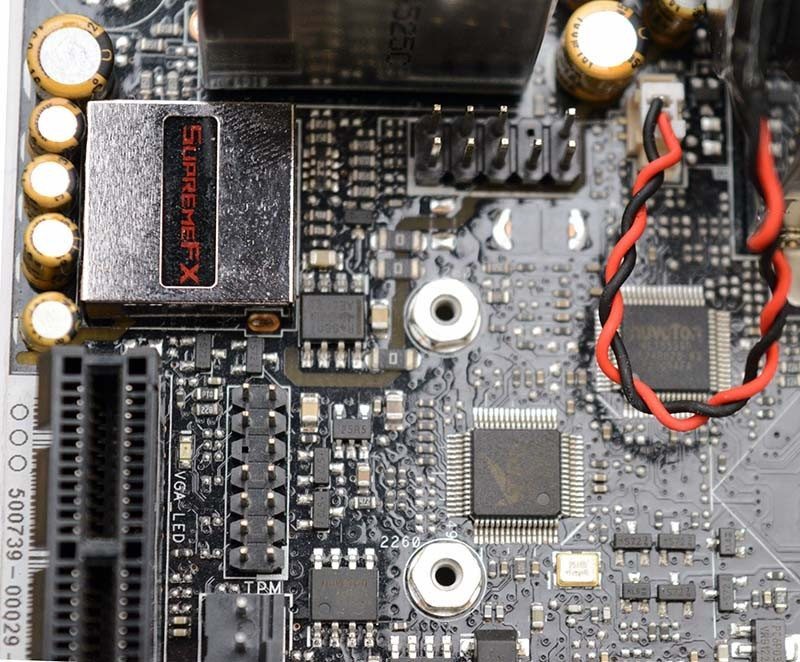ASUS Z170I PRO GAMING (LGA 1151) Motherboard Review
John Williamson / 9 years ago
A Closer Look
The Z170i PRO GAMING adopts an uncluttered design and utilizes every inch of the PCB’s surface area. Notice the two conveniently placed fan headers near the 8-pin EPS connector and two DIMM slots. The motherboard supports a maximum of 32GB RAM and speeds in excess of 3400MHz. Other features include a single PCIe x16 slot, diagnostic Q-LED and gorgeous heatsink design. In terms of the board layout, everything is positioned to make the building process remarkably simple.
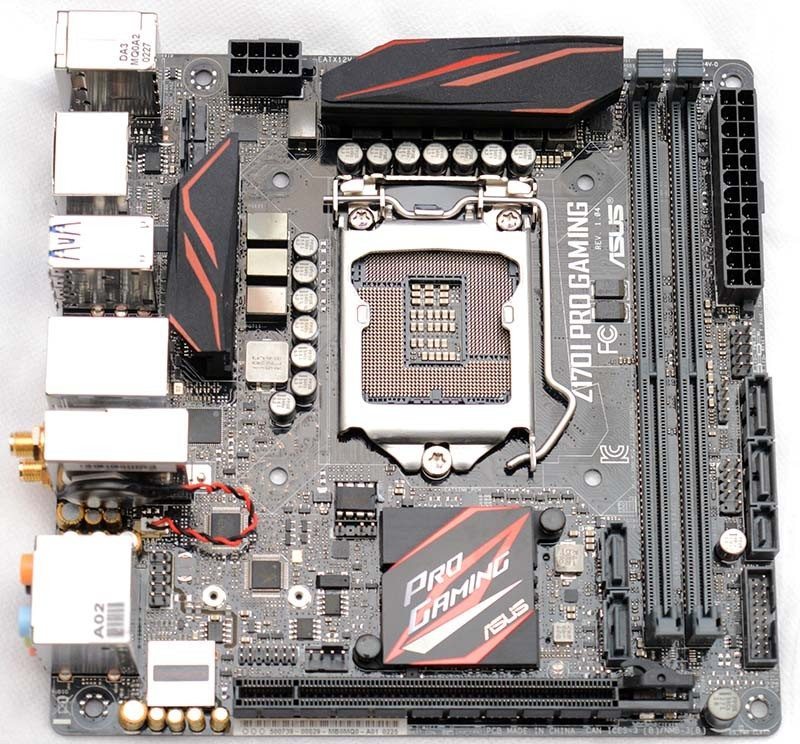
ASUS managed to incorporate an extremely capable 10-phase DIGI+ VRM which provides reliable power delivery. This is vital when trying to reach the maximum frequency potential of your CPU. On another note, overcurrent protection on each connector reduces the probability of short-circuit damage and helps to prolong the motherboard’s lifespan. ASUS TurboV Processing Unit (TPU) and Pro Clock technology are used to enhance stability at high frequencies. Although, the silicon lottery will be the determining factor when overclocking your processor.
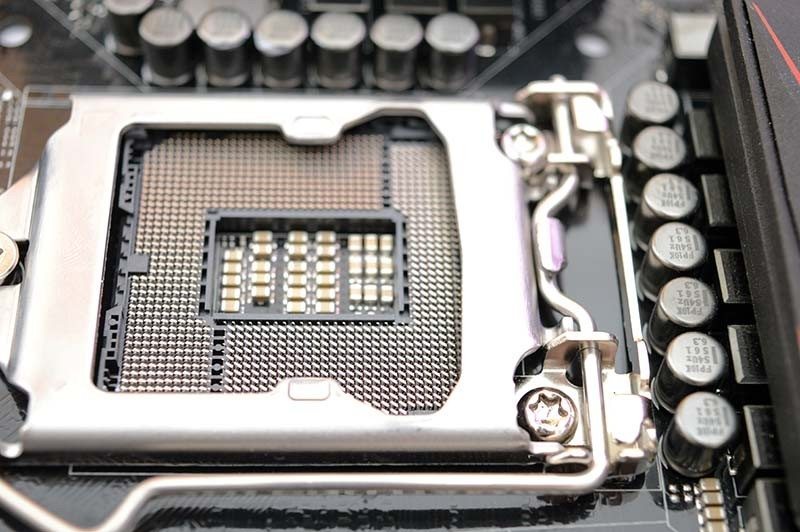
On the rear, we can see the LED audio path, heatsink screws and M.2 connector. When handling this section, the motherboard’s rigidity and reinforced construction becomes quite evident.
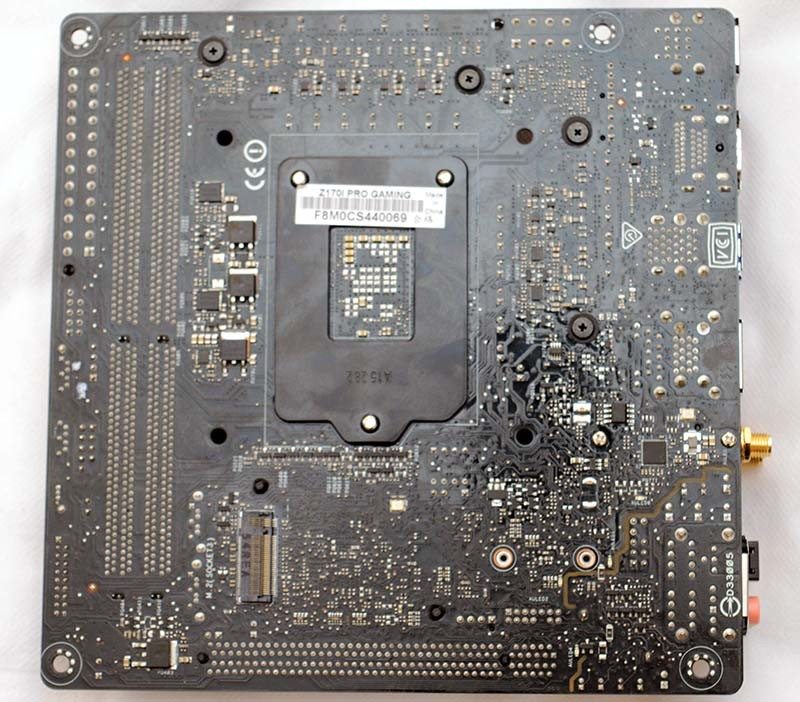
In terms of connectivity, the motherboard contains a straight USB 3.0 header, SATA Express, four SATA ports, 24-pin connector and 3 fan headers. This provides enough options to connect a boot SSD and selection of high-capacity mechanical disk drives. From this image, we can admire the premium capacitors which can withstand temperature variation between -55°C and 105°C. This is a staggering 110% better than the industry standard and prolongs the motherboard’s longevity under stress.
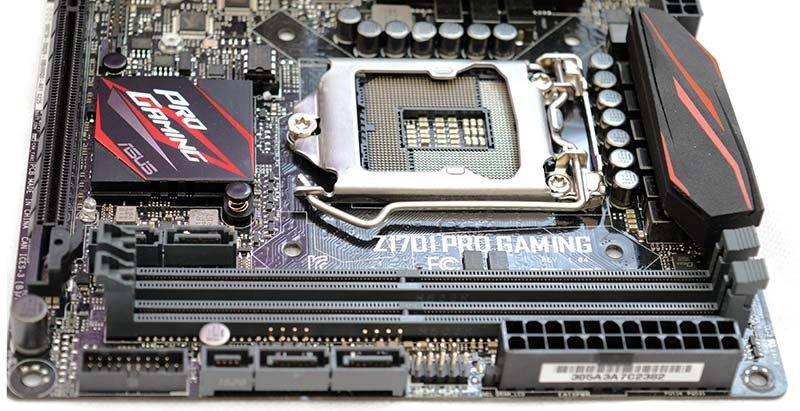
The back I/O features a PS/2 port, two USB 2.0, DisplayPort, HDMI, RJ45 Ethernet, two USB 3.1, WiFi, and standard audio connectors. I’m pleased to see the emergence of multiple USB 3.1 ports given the staggering maximum bandwidth of 10Gb/s. The i219-V Ethernet is protected by ESD guards and reduces CPU workloads compared to other networking solutions.

ASUS’ SupremeFX audio is based on the Realtek ALC1150 chipset while opting for premium Nichicon Japanese audio capacitors and a stainless steel EMI protection cover. Additionally, the SupremeFX shielding divides the PCB into two sections to reduce electrical interference. The integrated headphone amplifier supports audio hardware with up to 300Ω load impedance and offers superb clarity under high volume. Overall, the audio is stunning for a motherboard of this price and negates the need for a dedicated soundcard. This is essential when you factor in the ITX form factor’s limited room for only one PCIe slot.
